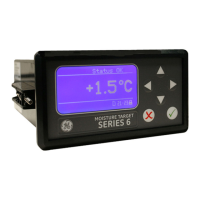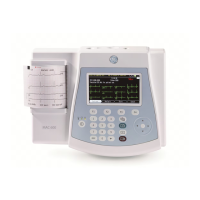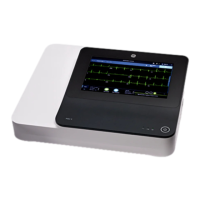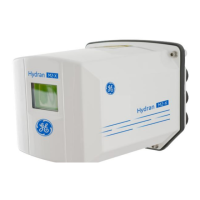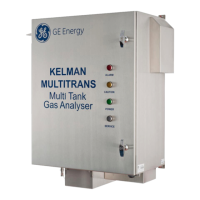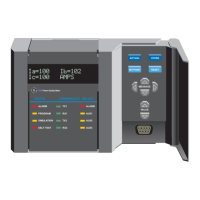GE Analytical Instruments ©2006 12-3 DLM 14291 Rev. A
• Install the screw cap and septum on the purge vessel. The septum has a Teflon
lining on one side of the septum, and this Teflon side should face down so that
the reagent does not come in contact with the silicone in the septum. The
Teflon coating is always a different color from the silicone in the septum.
Depending on the supplier of the septum it may be red, brown, or another
color, but can be identified by the shiny, hard surface in contrast to the soft,
dull silicone.
Adjustment of Purge Gas Flow Rate
The flow rate of inert gas into the purge vessel must be carefully adjusted. If the
flow rate is too low, the purge vessel will be under a relatively high vacuum. This
will cause rapid loss of the reducing agent and NO from room air can be drawn into
the purge vessel resulting in a high background signal. If the flow rate is too high,
NO from the samples can leak out into the atmosphere, causing reduced sensitivity
and poor repeatability. To adjust the flow rate:
• Disconnect the 1/8” stainless steel nut on the IFD filter line from the frit
restrictor on the NOA’s sample inlet.
• With the frit restrictor open to the atmosphere and the NOA in the Start mode,
record the cell pressure. The cell pressure can be viewed at the bottom of the
measurement menu or from the Control/Status screen.
• Reconnect the IFD filter line to the frit restrictor and tighten the nut
fingertight.
• Open the outlet stopcock and adjust the gas flow into the purge vessel using
the needle valve so that the cell pressure with the purge vessel connected is
the same as recorded when the frit restrictor was open to the atmosphere
(typically 4-7 torr).
Adjustment of Liquid Level
When the gas flow rate is properly adjusted, the purge vessel will be under a slight
vacuum and the level of the reducing agent should be near the top of the purge

